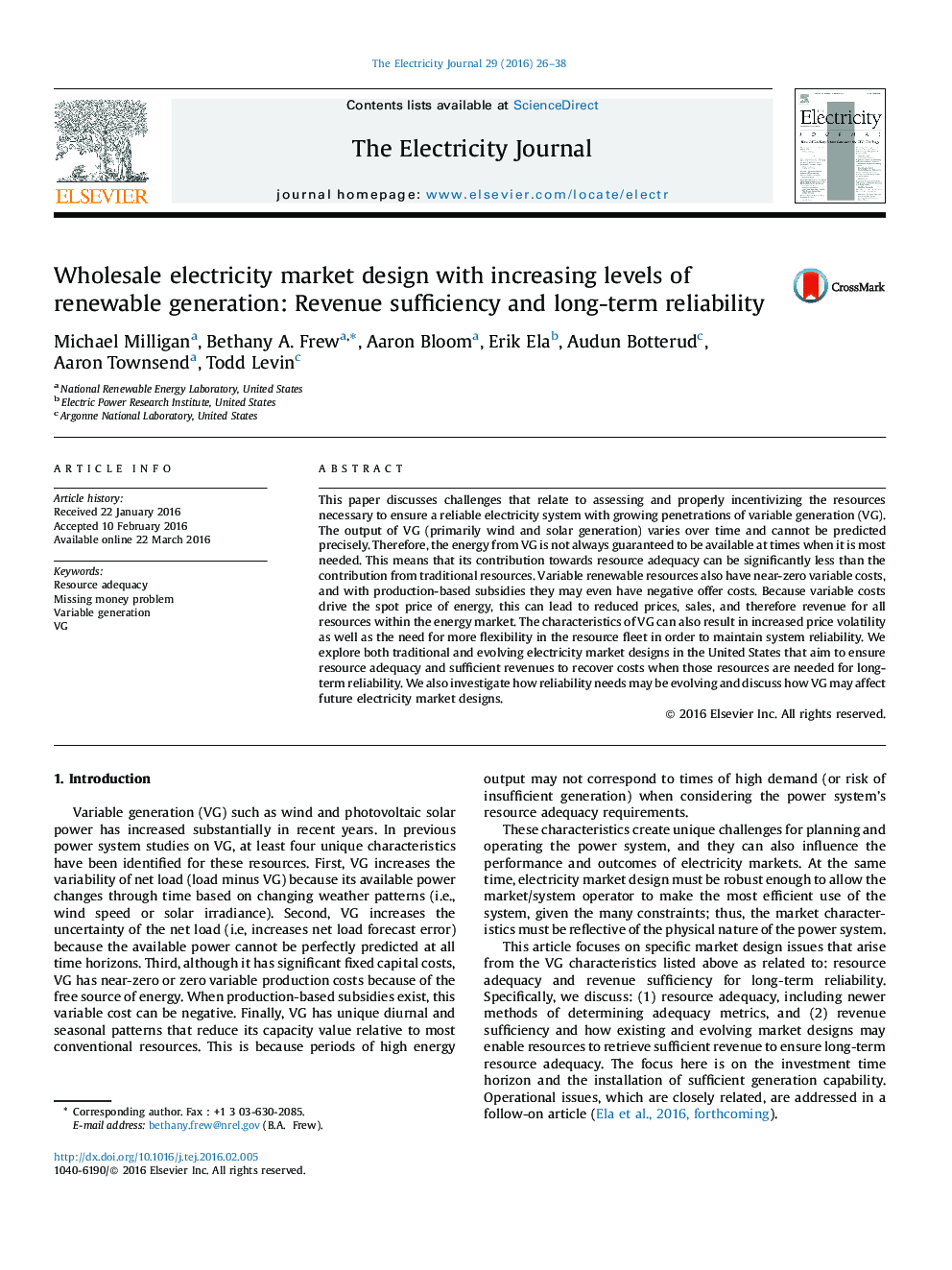| کد مقاله | کد نشریه | سال انتشار | مقاله انگلیسی | نسخه تمام متن |
|---|---|---|---|---|
| 706244 | 891568 | 2016 | 13 صفحه PDF | دانلود رایگان |
This paper discusses challenges that relate to assessing and properly incentivizing the resources necessary to ensure a reliable electricity system with growing penetrations of variable generation (VG). The output of VG (primarily wind and solar generation) varies over time and cannot be predicted precisely. Therefore, the energy from VG is not always guaranteed to be available at times when it is most needed. This means that its contribution towards resource adequacy can be significantly less than the contribution from traditional resources. Variable renewable resources also have near-zero variable costs, and with production-based subsidies they may even have negative offer costs. Because variable costs drive the spot price of energy, this can lead to reduced prices, sales, and therefore revenue for all resources within the energy market. The characteristics of VG can also result in increased price volatility as well as the need for more flexibility in the resource fleet in order to maintain system reliability. We explore both traditional and evolving electricity market designs in the United States that aim to ensure resource adequacy and sufficient revenues to recover costs when those resources are needed for long-term reliability. We also investigate how reliability needs may be evolving and discuss how VG may affect future electricity market designs.
Journal: The Electricity Journal - Volume 29, Issue 2, March 2016, Pages 26–38
